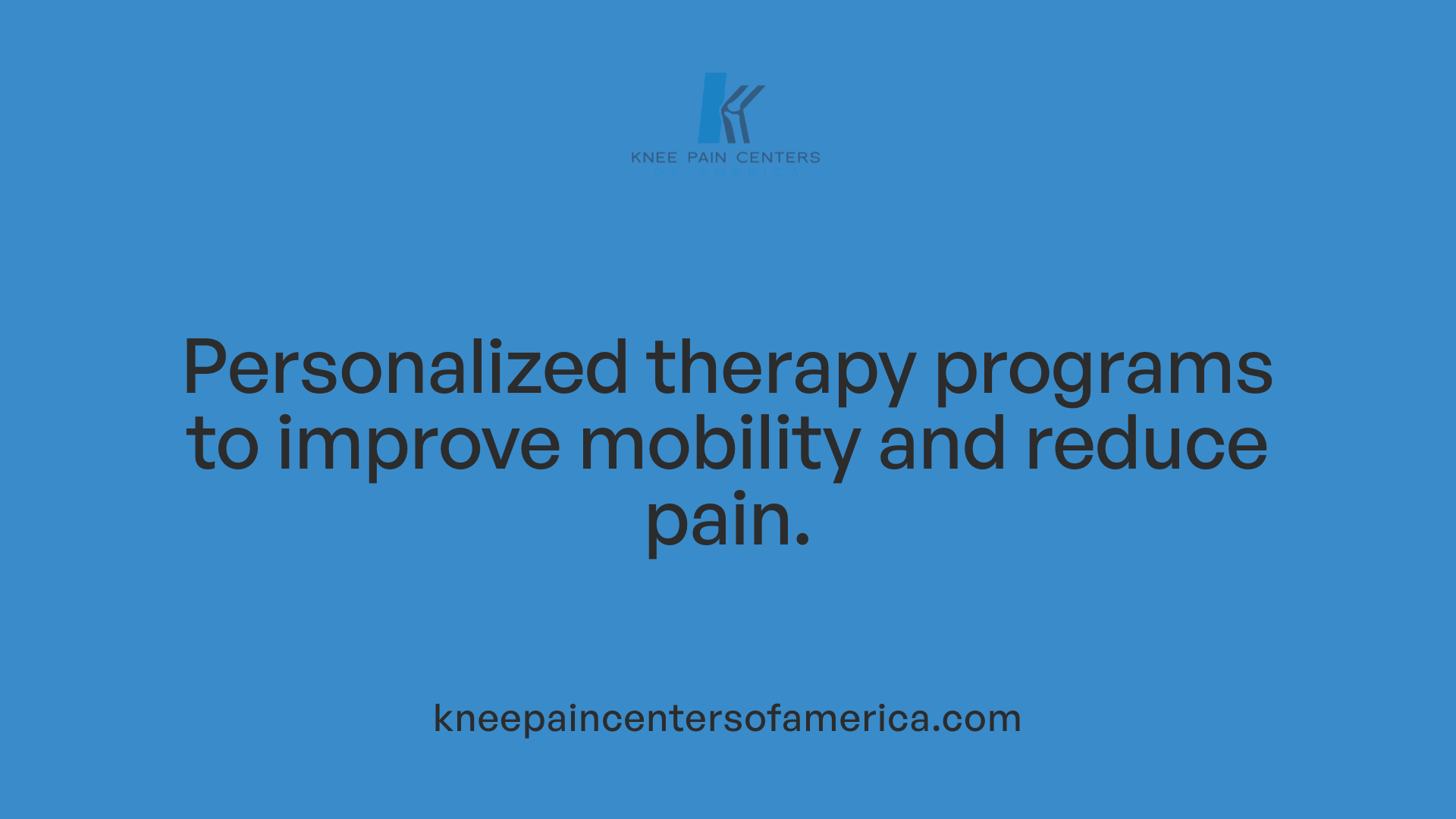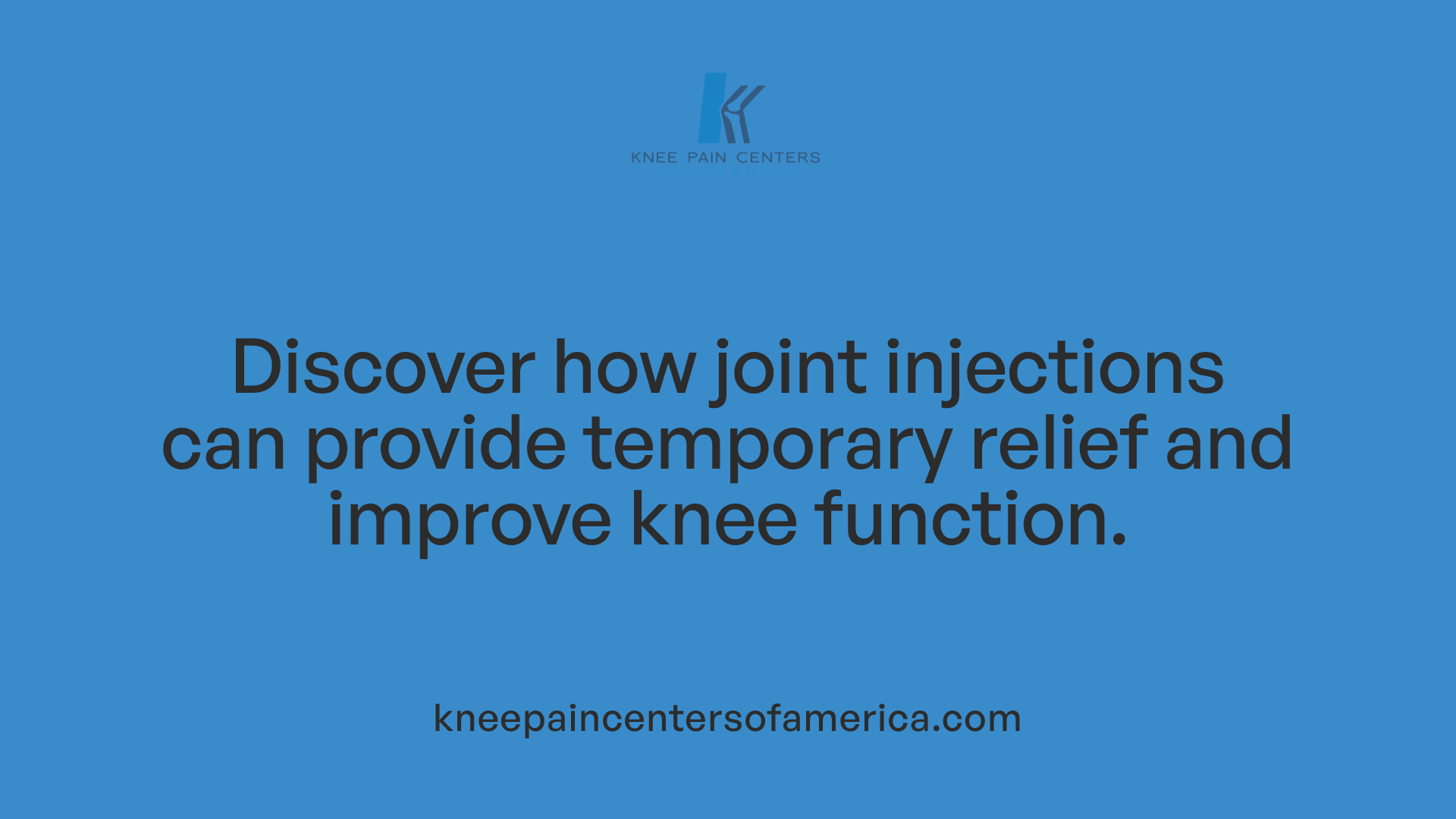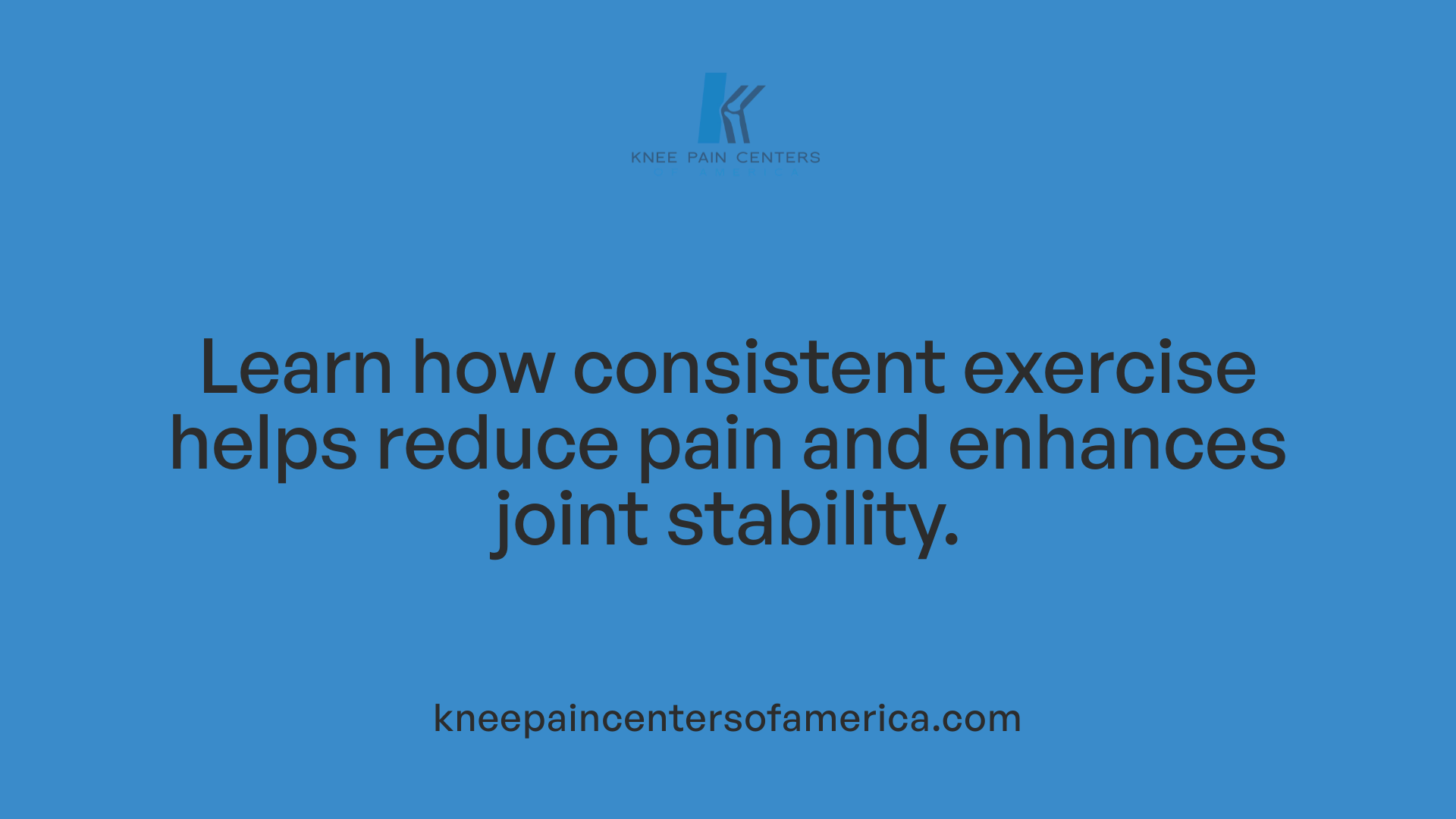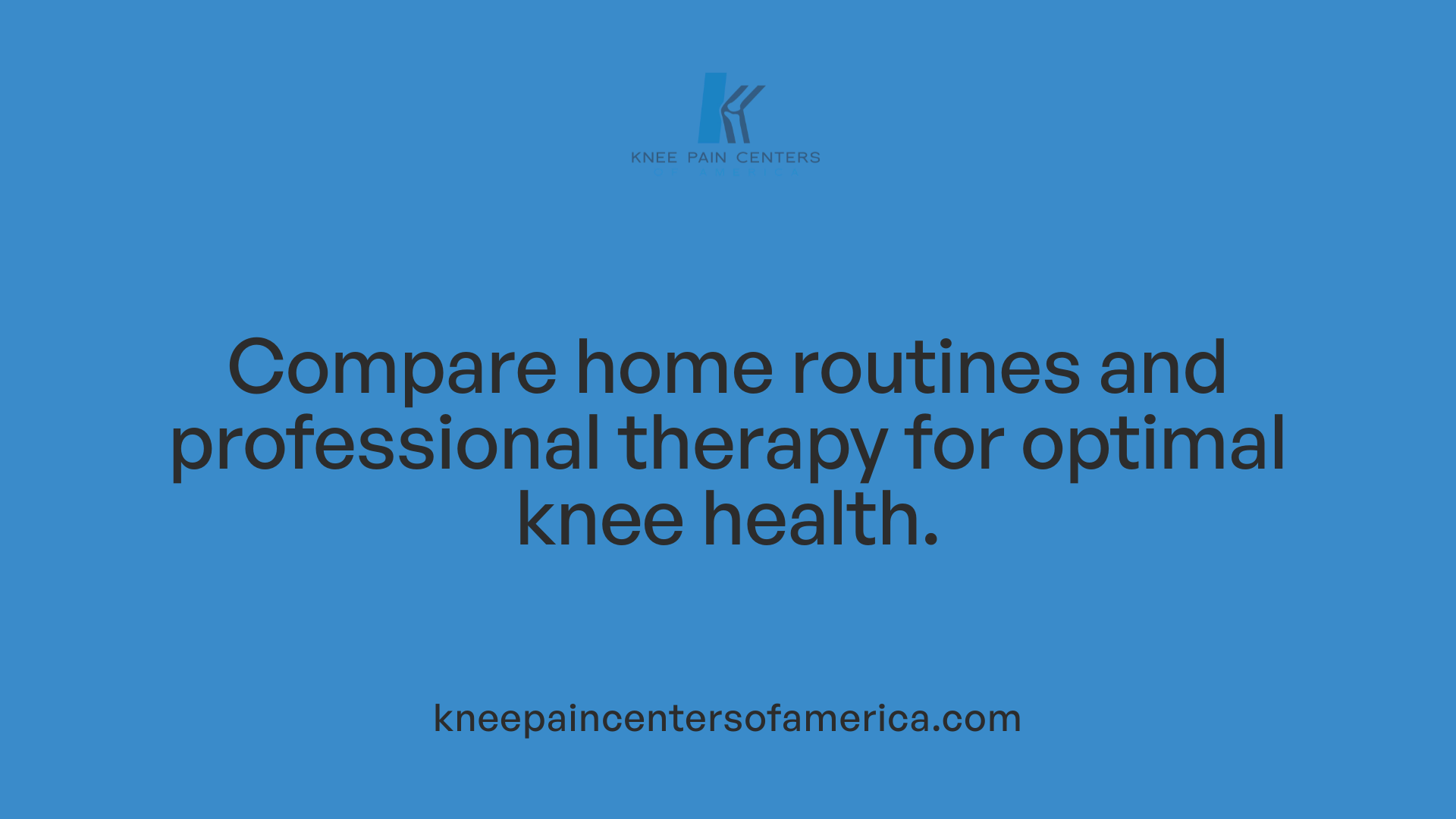Understanding Knee Pain and Osteoarthritis
Knee osteoarthritis is a prevalent condition characterized by the gradual wearing down of articular cartilage, leading to pain, stiffness, swelling, and decreased joint function. Affecting up to 80% of adults over 55, it significantly impacts quality of life. While various treatments exist, including medications, injections, physical therapy, and surgery, exercise — particularly strengthening exercises — plays a vital role in managing symptoms and improving knee health. This article explores the benefits of strengthening exercises for knee pain relief and shows how they fit into comprehensive osteoarthritis management.
Medical Treatments for Knee Pain and Osteoarthritis

What are the common medical treatments for knee pain and osteoarthritis?
Managing knee pain and osteoarthritis often involves a range of medical treatments tailored to the severity and symptoms. Common approaches include medications such as nonsteroidal anti-inflammatory drugs (NSAIDs), paracetamol, and topical agents like capsaicin cream to control pain and inflammation.
Joint injections are another option, with corticosteroids and hyaluronic acid used to provide temporary relief by reducing inflammation or improving joint lubrication. Physical therapy plays a vital role, employing exercises that improve joint mobility and muscle strength, and supportive devices which help stabilize the knee.
Surgical interventions, including partial or total knee replacement, are considered when conservative treatments fail or the damage is severe. However, surgery is generally a last resort due to risks and recovery time.
What is the role of lifestyle modifications?
Lifestyle modifications are essential in managing knee osteoarthritis effectively. Weight loss reduces joint stress, while regular low-impact exercises like walking, swimming, or cycling improve joint flexibility and muscle strength without placing excessive load on the knee. Exercise programs focusing on stretching and strengthening supporting muscles help alleviate pain and improve function.
Maintaining a gradual and consistent exercise routine, tailored to individual pain levels, supports tissue healing and long-term joint health. Patients are encouraged to listen to their bodies and avoid activities that exacerbate symptoms. Combining physical activity with medical treatments offers a holistic approach that can slow disease progression and enhance quality of life.
The Critical Role of Physical Therapy in Knee Osteoarthritis Management

What role does physical therapy play in managing knee pain due to osteoarthritis?
Physical therapy is crucial in managing knee osteoarthritis by providing personalized exercise programs designed to strengthen muscles supporting the knee, especially the quadriceps and hip muscles. These exercises reduce pain and enhance joint stability, leading to improved knee function.
Therapy includes a variety of movement techniques such as range-of-motion and stretching exercises that improve joint flexibility and help maintain or increase mobility. Manual therapy and neuromuscular training also play roles in restoring movement quality.
Moreover, physical therapists educate patients on pacing activities and weight management, aiding in symptom control and potentially delaying surgery. They emphasize listening to pain signals and modifying activities, ensuring exercises remain within safe pain limits (typically 0 to 5 on a pain scale) to prevent injury or symptom exacerbation.
Exercise programs tailored to knee osteoarthritis
Exercise programs are often structured and gradual, starting with low-intensity activities like walking, cycling, or aquatic exercises, which reduce joint stress while maintaining cardiovascular health.
Home-based exercise plans typically involve 25 minutes of stretching and strengthening exercises performed multiple times per week, supported by instructional materials such as videos and pamphlets. Physical therapy sessions complement home exercises with manual therapy and neuromuscular techniques, progressively increasing exercise difficulty over time to build strength and endurance.
Consistency is emphasized over intensity, with recommendations to gradually increase repetitions, generally up to two sets of 15 reps. Stretching exercises usually last 20 to 30 seconds per stretch, repeated in two to three sets daily.
Muscle strengthening, flexibility and activity modifications
Strengthening exercises like straight leg raises, quad sets, step-ups, and resistance band work target the muscle groups that stabilize the knee, which decreases strain on affected joints and reduces osteoarthritis symptoms.
Flexibility is maintained and enhanced through hamstring, calf, and quadriceps stretches that reduce stiffness and improve range of motion. Modifications such as avoiding deep squats and excessive twisting help protect the joint from additional stress.
Engaging in regular, moderated physical activity—about 30 minutes daily—supports tissue healing, maintains joint function, and improves quality of life. Patients are advised to stop exercises that increase pain or cause new symptoms and to consult healthcare professionals if problems persist.
Overall, physical therapy offers a multidimensional approach involving strengthening, flexibility improvement, and activity modification that effectively manages osteoarthritis symptoms, promotes safe exercise habits, and enhances long-term knee health.
The Role and Effectiveness of Joint Injections in Knee Osteoarthritis

Can hyaluronic acid injections improve symptoms of knee osteoarthritis?
Hyaluronic acid injections serve as lubricants and shock absorbers within the knee joint. They help reduce pain and stiffness while improving joint mobility. Typically, these injections are administered as a series over several weeks, and the relief can last for about six months. Clinical evidence supports that hyaluronic acid injections offer noticeable improvement in pain and function, especially in the early to moderate stages of osteoarthritis. Side effects are generally minor and transient, making this treatment a viable option for symptom management.
How do corticosteroid injections help manage knee osteoarthritis pain?
Corticosteroid injections target inflammation within the knee joint, which is a primary cause of pain and stiffness in osteoarthritis. These injections provide temporary relief that can last from weeks to months. They are usually considered when other treatments have failed. Administered directly into the joint, often under medical guidance to ensure accuracy, corticosteroids reduce swelling and ease discomfort. However, overuse carries risks such as infection, cartilage thinning, and nerve damage. Therefore, their use must be carefully monitored as their effectiveness diminishes over time.
Mechanism, benefits, and risks of injections
Both hyaluronic acid and corticosteroid injections act locally within the knee joint but differ in mechanisms. Hyaluronic acid supplements joint fluid, improving cushioning and reducing mechanical stress, while corticosteroids suppress inflammatory processes that exacerbate symptoms. The benefits include reduced pain, enhanced mobility, and improved quality of life. Despite this, injection risks range from mild transient side effects to potential joint damage if misused or used too frequently. Medical consultation is essential to determine suitability and to balance benefits against possible risks for each individual patient.
Exercise as a Foundation for Knee Pain Relief and Osteoarthritis Management

What Types of Exercises Are Beneficial for Knee Osteoarthritis?
Exercise plays a crucial role in managing knee osteoarthritis by improving joint flexibility, muscle strength, and reducing pain. Beneficial types include:
- Stretching exercises such as hamstring, calf, and quadriceps stretches that improve flexibility and range of motion. These should be held gently for 20 to 30 seconds with 2 to 3 sets daily.
- Strengthening exercises like straight leg raises, quad sets, sit-to-stands, step-ups, and pillow squeezes that build muscle support around the knee joint. Using resistance bands can further assist in muscle strengthening.
- Low-impact aerobic activities like walking, cycling, swimming, and water aerobics help maintain joint function while minimizing stress on the knees.
- Neuromuscular, balance, and proprioception exercises improve joint stability and reduce fall risk.
How Do Aerobic and Strengthening Exercises Impact Osteoarthritis Symptoms?
Aerobic exercises reduce knee pain, improve movement, and enhance overall quality of life by increasing blood flow and promoting joint lubrication. Strengthening exercises target muscles such as the quadriceps and hips, which stabilize the knee and reduce joint strain. They also support tissue healing and delay cartilage degeneration. Regular practice can modify inflammation markers associated with cartilage damage, further alleviating symptoms.
Why Are Consistency and Gradual Progression Important?
Consistent physical activity—about 30 minutes daily—is essential for sustained benefits. Starting with shorter sessions (5-10 minutes) and low intensity helps prevent discomfort and injury. Progress should be gradual, increasing repetitions to a recommended max of 2 sets of 15 reps. Pain should be monitored closely, keeping exercise discomfort between 0 to 5 on a pain scale. Exercises should be stopped or modified if pain worsens.
Together, these exercise principles foster safer, more effective management of knee osteoarthritis, contributing to improved joint health, reduced stiffness, and sustained pain relief.
Strengthening Exercises: Techniques to Support and Stabilize the Knee

What Specific Strengthening Exercises Are Recommended for Knee Osteoarthritis?
Several targeted exercises help build muscle support around the knee and improve stability, which can reduce osteoarthritis pain. Common strengthening moves include:
- Straight leg raises: Lifting the leg straight while lying down to engage the quadriceps.
- Quad sets: Tightening the thigh muscle while keeping the leg straight.
- Pillow squeezes: Placing a pillow between the knees and squeezing to activate inner thigh muscles.
- Bodyweight squats and half squats: These promote overall lower body strength.
- Step-ups and heel raises: To strengthen muscles supporting the knee during movement.
- Sit-to-stand exercises: Repeatedly standing up from sitting to improve knee function.
- Side-steps and speed skaters: Often performed with or without resistance bands to target hip and thigh muscles.
How Are Resistance Bands Used in Strengthening Exercises?
Resistance bands are an effective tool to enhance muscle strength and knee stability. Recommended exercises using bands include:
- Leg presses and leg lifts with bands: To strengthen the quadriceps and hip muscles.
- Seated knee lifts with resistance bands: Targeting muscles that support knee alignment.
It's important to use proper techniques when incorporating resistance bands:
- Use foam handles for comfort.
- Avoid overexertion to prevent injuries.
- Start with lighter resistance and gradually increase as strength improves.
What Guidelines Ensure Safe Practice and Progression?
Building knee strength safely requires a gradual, progression-based approach:
- Start with low intensity and shorter durations: Begin with small repetitions and sets, for example, up to 2 sets of 15 repetitions.
- Increase exercise difficulty progressively: As muscles strengthen, slowly add repetitions, sets, or resistance.
- Listen to your body’s pain signals: Exercise should be within a comfortable pain rating of 0 to 5; stop if pain worsens.
- Gentle stretching before exercises: Perform hamstring, calf, and quadriceps stretches lasting 20 to 30 seconds.
- Avoid deep squats and excessive twisting movements: To prevent additional stress on knee joints.
- Consistency is key: Regular practice, ideally about 30 minutes daily, yields the best benefits.
Following these guidelines supports muscle strengthening around the knee, contributing to improved joint stability and reduced osteoarthritis symptoms.
Exercise Program Success: Home Exercises and Physical Therapy Comparisons

How effective are home exercise programs for knee osteoarthritis?
Home exercise programs have shown substantial benefits for individuals with knee osteoarthritis, especially those with meniscal tears. A structured program involving about 25 minutes of lower extremity stretching and strengthening exercises performed four times weekly has been effective in reducing knee pain. Participants engaging in such home-based routines reported improvements in knee pain levels sustained over 3, 6, and 12 months.
What is the role of physical therapy sessions compared to home exercises?
Physical therapy sessions, which may include muscle stretching, strengthening, manual therapy, and neuromuscular training with gradually decreasing visit frequency over three months, lead to slightly greater pain relief than home exercises alone. However, research indicates that both standard and sham physical therapy provided similar outcomes, suggesting that the exercise component itself is the critical factor for pain relief.
Why are adherence and safety important in exercise programs?
Maintaining consistent physical activity is essential to improve muscle strength, flexibility, and joint health in osteoarthritis management. However, adherence can be challenging; motivational messages have not conclusively improved compliance or pain outcomes. Safe environments and attentive listening to body pain signals are vital to avoid overstressing the knee and prevent symptom worsening. Exercises should be tailored to each person's pain tolerance, and activities stopped if pain worsens or new pain arises. Consulting healthcare professionals when symptoms persist is recommended to ensure a safe and effective exercise regimen.
Empowering Knee Health Through Strengthening Exercises
Strengthening exercises serve as a cornerstone in managing knee osteoarthritis, offering pain relief, improved joint function, and enhanced quality of life. Paired with physical therapy, lifestyle changes, and when necessary, medical treatments like injections or surgery, an exercise regimen tailored to individual needs fosters knee stability and mobility. Consistency, gradual progression, and listening to the body's signals are essential to maximize benefits and avoid injury. Ultimately, empowering patients with knowledge and effective strengthening routines can transform their experience with knee pain and osteoarthritis, supporting long-term joint health and active living.
References